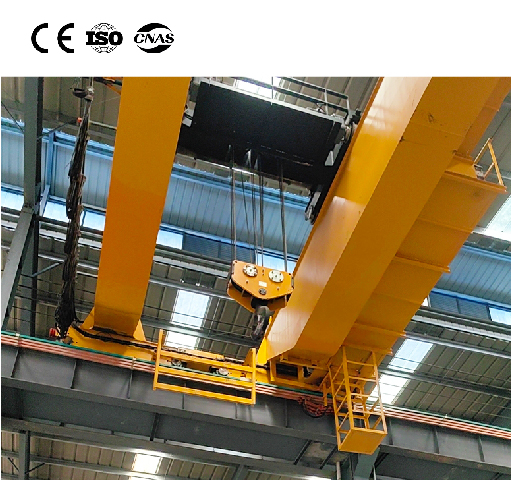Enter the Workstation Bridge Crane – a compact, versatile powerhouse designed specifically for localized lifting tasks. Offering significant advantages over traditional forklifts or manual handling within a defined area, these cranes are transforming productivity and safety. This guide explores everything you need to know about workstation bridge cranes and why they might be the perfect solution for your operational needs.

What is a Workstation Bridge Crane?
A workstation bridge crane is a type of light-duty overhead crane system designed for use within a single workstation, bay, or specific area of a facility. Unlike massive overhead cranes spanning entire buildings, workstation cranes are characterized by:
Compact Size: Designed to fit within the footprint of a specific work cell or area.
Light to Medium Capacity: Typically handling loads from 150 lbs (68 kg) up to 2 tons (1,814 kg), though capacities can vary.
Modular Design: Often constructed from standardized components (bridge beams, runways, end trucks, supports) allowing for customization and future expansion.
Manual or Motorized Movement: Loads are moved using a manual push/pull motion or via motorized travel systems (powered bridge travel, powered hoist trolley).
Ceiling-Mounted or Freestanding: Can be suspended from existing building structures (if engineered and approved) or supported by floor-mounted columns (free-standing workstation bridge cranes).
Key Components:
Runway Beams: Installed horizontally along the length of the work area (X-axis).
End Trucks: Wheels mounted on the bridge beam that travel along the runway beams.
Bridge Beam: The horizontal beam that spans the width of the work area (Y-axis), traveling on the end trucks.
Hoist Trolley: Moves along the bridge beam (Z-axis direction), carrying the lifting mechanism.
Hoist: The lifting device itself (chain hoist, wire rope hoist, vacuum lifter) attached to the trolley.
Support Structure: Columns (for freestanding) or ceiling attachments (for suspended).
Why Choose a Workstation Bridge Crane? Top Benefits
Investing in a workstation bridge crane delivers tangible improvements:
Enhanced Ergonomics & Worker Safety: Eliminates strenuous lifting, bending, and awkward postures. Reduces risk of musculoskeletal disorders (MSDs) and lifting injuries dramatically. Workers guide loads effortlessly within the crane’s coverage area.
Boosted Productivity: Dramatically speeds up material movement within the workstation. Operators can position loads with pinpoint accuracy quickly, reducing task time and increasing throughput.
Optimized Space Utilization: Frees up valuable floor space otherwise needed for forklift aisles. The overhead design keeps the work area clear underneath.
Improved Load Control & Positioning: Provides smooth, precise vertical and horizontal movement, allowing for delicate placement of parts, tools, or assemblies.
Versatility & Flexibility: Easily adapted to various tasks and processes. Hoists can be swapped, and modular designs allow reconfiguration or expansion as needs change. Ideal for assembly, machining, packaging, inspection, maintenance, and kitting.
Reduced Product Damage: Gentle handling minimizes the risk of dropping or bumping delicate items.
Cost-Effectiveness: Lower installation costs compared to large overhead cranes. Delivers a strong return on investment (ROI) through reduced labor costs, injury rates, and product damage, plus increased output.
Common Applications: Where Workstation Bridge Cranes Shine
These cranes excel in diverse settings requiring precise, repetitive material handling within a confined area:
Assembly Lines: Moving components between stations, positioning sub-assemblies.
Machine Shops: Loading/unloading CNC machines, lathes, mills; handling heavy tooling.
Maintenance Bays: Lifting engines, transmissions, or heavy equipment parts for repair.
Warehousing & Staging: Moving parts from racks to packing stations or loading docks.
Inspection Areas: Positioning items for quality control checks.
Packaging Operations: Handling filled containers or pallets.
Laboratories: Moving sensitive equipment or materials.
Automotive Manufacturing: Engine/transmission installation, component handling.
Choosing the Right Workstation Bridge Crane: Key Considerations
Selecting the optimal system requires evaluating your specific needs:
Capacity: What is the maximum weight you need to lift? Include the weight of any fixtures or attachments.
Span: What width (bridge beam travel) do you need to cover?
Length: How far does the crane need to travel along the runways?
Lift Height: How high do you need to raise the load from its lowest point?
Duty Cycle: How frequently will the crane be used (Intermittent vs. Continuous)?
Mobility: Manual push vs. Powered travel (bridge and/or trolley)? Powered systems add cost but reduce operator effort significantly.
Environment: Consider factors like temperature, humidity, dust, chemicals, or potentially explosive atmospheres (requiring specific certifications).
Support Structure: Is your existing building structure suitable for suspension (requires engineering analysis)? Or do you need a freestanding system?
Hoist Type: Chain hoist (common, cost-effective) vs. Wire rope hoist (smoother, longer lift heights) vs. specialized (vacuum, magnet).
Future Expansion: Will your needs grow? Modular systems simplify adding length or height later.
Workstation Bridge Cranes vs. Jib Cranes: What’s the Difference?
While both are designed for localized lifting, key distinctions exist:
Coverage: Workstation bridge cranes cover a rectangular area (X and Y axes). Jib cranes cover a circular area (rotation around a fixed point).
Capacity & Span: Bridge cranes generally handle heavier loads and longer spans than jib cranes.
Flexibility: Bridge cranes offer more comprehensive coverage within their rectangular envelope. Jib cranes are ideal for tasks directly around a machine or workstation corner.
Conclusion: Elevate Your Efficiency and Safety
The workstation bridge crane is more than just a lifting device; it’s a strategic investment in ergonomic efficiency, operational safety, and bottom-line productivity. By bringing the lifting power precisely where it’s needed – directly over the workstation – it eliminates unnecessary strain, reduces risks, and streamlines material flow. Whether you’re assembling intricate products, maintaining heavy machinery, or managing warehouse logistics, a well-chosen workstation bridge crane can transform your workflow, protect your workforce, and deliver a compelling return on investment. Explore the modular options available and discover how this essential tool can elevate your operations today.